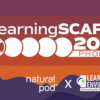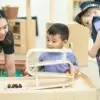Recently, I wrote a post about creating learning environments that support the four types of learners. In it I shared about The VARK Model that identifies the four primary types of learners: visual, auditory, reading/writing, and kinesthetic. I noted that, “Each learning type responds best to a different method of teaching and the learning environment can help support these different teaching tactics.” Not long after my piece was posted an article in the Guardian newspaper refuted the need for teachers to accommodate different learning styles due to the belief that focusing on only one method of learning may make children less adaptable. The article states that, “Possibly the worst thing about it in practice is when teachers actually bring the pupils in on it, and they start to believe that they can only learn kinesthetically or whatever. It then becomes an excuse not to engage with other teaching methods.” The article goes on to share about recent studies on the subject, “They say it is ineffective, a waste of resources and potentially even damaging as it can lead to a fixed approach that could impair pupils’ potential to apply or adapt themselves to different ways of learning.”
While I agree that pigeonholing a child as a particular type of learner and using only one specific method to teach a child is limiting, it can be beneficial to be cognizant of how each child learns best. Identifying learning styles need not be about choosing one specific way to reach a child, but, rather it can be about getting to know each child’s needs and providing them choices in the classroom. A learning environment should allow students to access different methods of learning and should meet children where they are. Rather than limiting children, as the article proposes, a classroom that helps students access information in terms that they are comfortable with can be more engaging and can set children up for a successful learning experience.
A learning environment and teaching methods that meet learners where they are can enhance the educational experience, provide a better connection to the material, and aid in retention of the material. Overall, presenting information in a variety of ways can make for a more meaningful learning experience. As one reader commented, “Some (children) may come to more genuinely enjoy learning if taught differently.” And isn’t that the ultimate goal?











